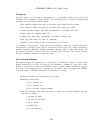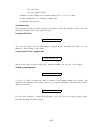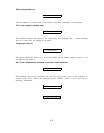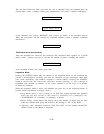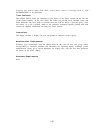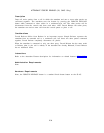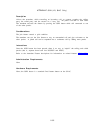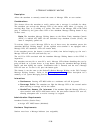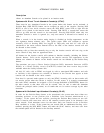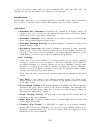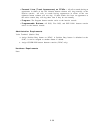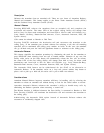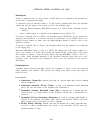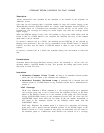ATTENDANT POSITION BUSY
Description
Allows an Attendant Console to be placed in an inactive mode.
Systems with Direct Trunk Attendant Console(s) (DTAC)
There must be two Attendant Consoles in the system before this feature can be activated. A
Position Busy (POS BUSY) button can be assigned on each of the consoles. Pressing POS
BUSY at one of two active consoles causes the POS BUSY status LED to light and the
console to be placed in the inactive mode.
Pressing POS BUSY a second time causes the
LED to go dark and the console to be reactivated.
Pressing POS BUSY when only one
Attendant Console is active is ignored (i.e.,
only one console is allowed to be inactive at a
time. )
When a console is in the inactive mode, ringing is disabled on facility appearances on the
two rightmost button columns only.
The (green) status LEDs will continue to operate
normally. Calls to floating PDCs not logged in,
DID calls, and dial “O” calls will be
transferred to the active console. Internal calls to the PDC of the inactive console will still
be directed to that console.
Incoming calls on lines that normally ring at only the inactive console will now ring at the
active console if they have an appearance there.
All buttons on the inactive console will continue to function normally, including the Selector
Console buttons.
Calls can be originated by the inactive console. Call appearances in the
leftmost two columns of buttons on the inactive console are not affected by the Position Busy
feature.
The attendant can press a Direct Station Selection (DSS), Automatic Intercom (AUTO
ICOM), or a Direct Facility Access (FACILITY) button and then receive busy-to-idle
reminder when the facility becomes idle.
All dial “O” calls, calls to FPDCs not logged in, calls to unassigned DID numbers, and calls
to facilities in the rightmost two columns of buttons of the console that appear at both
consoles will be directed to the active console.
Note that if a personal trunk appears on only one DTAC, incoming calls on those trunks will
not receive service when the console is inactive. For this reason, it is strongly recommended
that each DTAC attendant be assigned a Call Coverage-Individual (COVER-IND) button for
the other console so that these calls can be covered. Also, be sure to make the Attendant
Console the principal station (owner) on all trunks that are to receive coverage by the other
attendant.
Systems with Switched Loop Attendant Console(s) (SLAC)
In order for the Position Busy feature to be operational, the system must have either two
attendant positions or one position plus a multiline voice terminal administered as a
“backup.”
If the system has two consoles, pressing the Position Busy button on one will
make it inactive and cause most calls in the common console queue to be directed to the
active console.
Each attendant covers for the other. Only one console can be in Position
Busy condition at a time.
If the system has one console with an administered
backup voice
terminal, pressing the POS BUSY button will make the SLAC inactive, and most calls from
the common queue will be directed to the
backup terminal.
2-37



